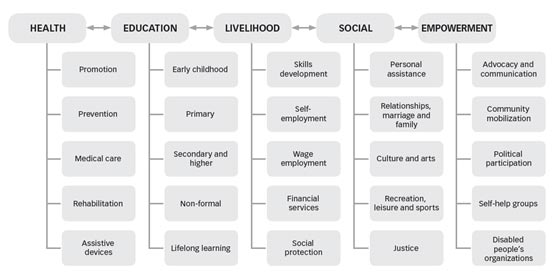Your progress
0%

The CBR Matrix 
The CBR matrix consists of five components (Health, Education, Livelihood, Social and Empowerment) and their associated elements. The Matrix provides a common framework that can be used to guide the development of new, as well as the revitalization of existing, CBR programmes. created as part of the CBR Guidelines, has a set of common organizing principles for community-based rehabilitation, which are introduced in this module.
It is recognized and expected that each CBR activity is unique and will need to make important decisions based on the human and economic resources available, as well as the economic, political and cultural environment in which the programme must operate. These decisions include: